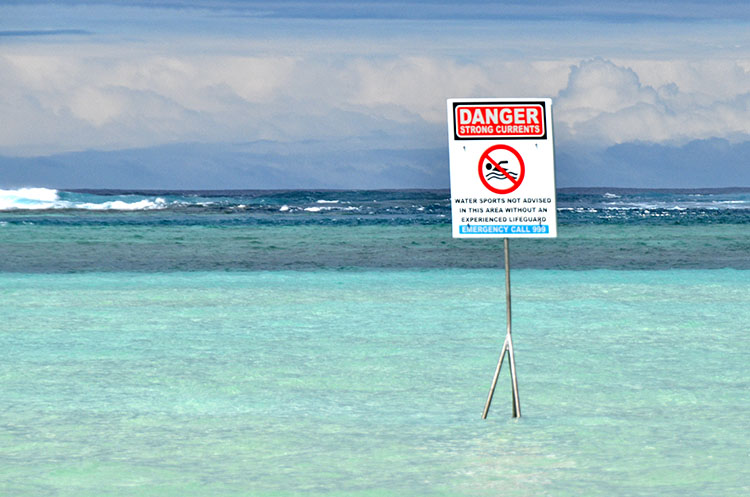Reef passages highly dangerous
Friday 30 December 2022 | Written by Cameron Scott | Published in Local, National

The new and improved water safety sign which is planted at the entrance to the Ava’avaroa passage. 21082402
A former professional lifeguard wants expat Cook Islanders holidaying in Rarotonga to be extra-cautious of lagoon conditions when they’re swimming or using water craft.
Josh Utanga of Snorkel Cook Islands, says his warning applies especially to visitors from New Zealand and Australia whose swimming skills are a bit rusty and who may have not had much – or any, experience of local conditions.
“My advice is please, don’t be a hero. Just be very careful,” Utanga says.
Speaking from the Bay of Plenty, New Zealand resort town Mt Maunganui where he first trained as a lifeguard and is presently on holiday, Utanga says the sea needs plenty of respect.
Utanga first became a lifeguard at the age of 14, and has worked as a professional lifesaver at Mount Maunganui and the Gold Coast, Australia. He also represented the Cook Islands in kayaking in the 2012 Olympics.
Along with other operators, he runs tightly-supervised turtle snorkelling tours near the notorious Ava’avaroa passage at Vaimaanga, and emphasises visitors should keep away from dangerous passages on the southern side of Rarotonga.
The passages at Ava’avaroa, Papua, Rutaki and Arorangi and the areas around them are hazardous places to swim, snorkel and kayak – and have claimed the lives of a number of tourists and locals over the years.
Maps of the island and prominent signs warn of the dangers, but are frequently ignored by beach-goers. The current at the passages can exceed 15kmh and, locals emphasise, can pull you under the water, as well as out to sea.
“There are some especially bad currents in those places. When the tide goes out, all that water from the lagoon has to go out to sea, and the currents are fierce,” Utanga says.
“If you do get stuck, don’t panic, but swim parallel to the current until you can put your feet down, then simply walk out.”
In September this year, two tourists narrowly avoided being swept through the passage at Vaimaanga after swimming directly towards it, and Cook Islands Tourism’s director of destination development, Christian Mani said at the time, that the situation could easily have been avoided.
“Cook Islands Tourism take our role in preventing these situations very seriously and do our best to mitigate the risks associated with water safety, However, there will always be some who do not give heed to the warning signs,” Mani said.














































